Shocking graffiti reading ‘kill a tourist’ has appeared in Tenerife amid Spain‘s ongoing protests against holidaymakers.
The frightening slogan was spotted on a house in the south of the Spanish island by a concerned resident who admitted to being worried that the mass protest movement against overcrowding was going too far.
Speaking to LBC, they said: ‘Things on the islands are getting worse due to the large number of tourists and new residents, which leave us without homes and severely affect our natural environment’.
The local, who remained anonymous due to safety concerns, added that people on the island are becoming desperate for change and respect.
‘But perhaps this does not justify those actions, which seem to be escalating. It’s frightening,’ they said.
Footage of the graffiti being painted on to the wall was posted online by the Islas de Resistencia group, which describes itself as ‘a project to recover the memory of social movements in the Canary Islands’.
The new graffiti follows a summer of major demonstrations across Spain’s popular resorts, with anger particularly mounting over mass tourism.
A recent protest erupted in October after hundreds of demonstrators stormed Tenerife’s Troya beach, where sun-seeking holidaymakers were stunned to be disrupted by a placard-waving mob yelling slogans such as ‘More tourists, more misery’ and ‘the Canary Islands are not for sale’.

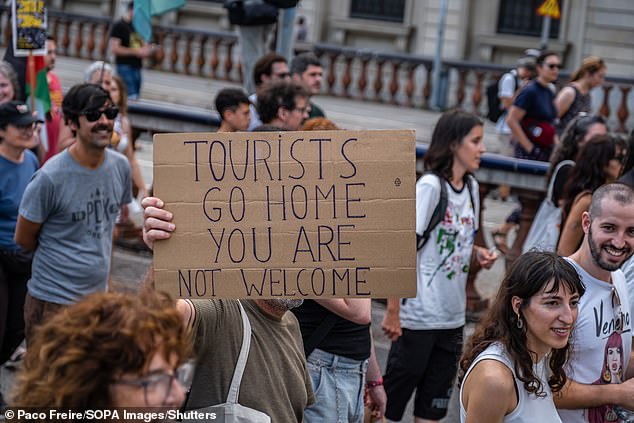
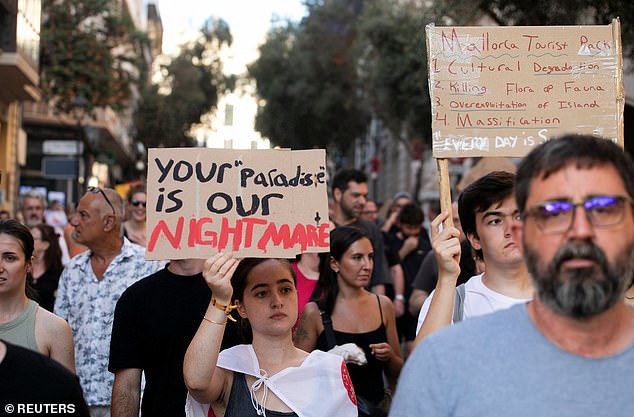
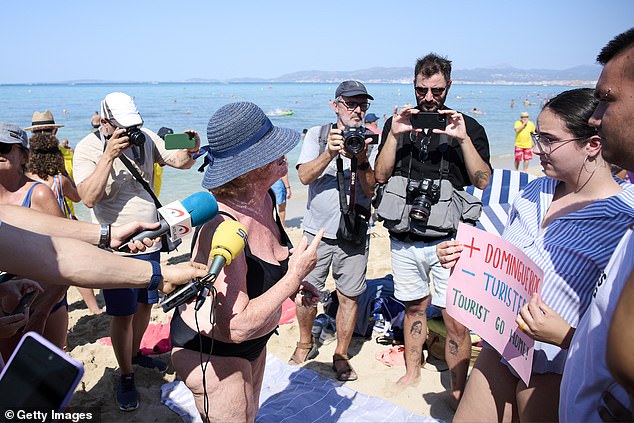
Protesters descended on the beach, one of the most popular in Las Americas (Tenerife), with many beating on drums and blowing whistles as they walked along the shoreline.
Astonishing footage of the incident showed holidaymakers being surrounded and penned in by Spanish locals while they were sunbathing in swim shorts and bikinis.
There were no reports of any violence, but protesters, whose banners included one in English which said ‘Go Home Tourist’ are said to have been mocked and taunted.
Half a dozen activists also went on hunger strike outside a church in the northern Tenerife town of La Laguna last year.
It began on April 11, 2024, and was called off after 20 days.
Victor Martin, a spokesman for Canarias Se Agota which translates into English as ‘Canary Islands on the Brink, said before it started: ‘The hunger strike is indefinite and will continue until the two macro hotel projects we’re fighting against are stopped for ever and the regional agreement agrees in writing to sit down and talk to us about a tourist moratorium.
‘A tragedy could occur and someone could die if the government doesn’t listen.’
The hunger strikers wanted authorities to halt two tourist projects, one involving the construction of a five-star hotel by one of Tenerife’s last virgin beaches called La Tejita.
They also wanted local and regional politicians to change the tourist model to protect the island from the worst excesses of mass tourism including sea pollution, traffic gridlock and lack of cheap affordable housing linked to the pushing-up of property prices because of Airbnb-style holiday lets.

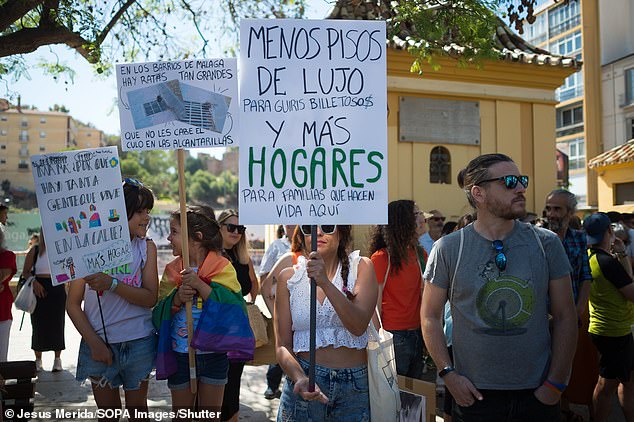
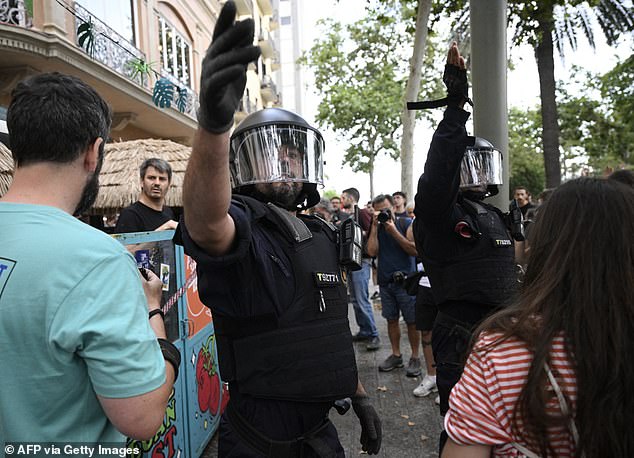

On a separate occasion, protesters from a platform called ‘Lanzarote has a Limit’ were seen filmed storming an illegal hotel in the island resort of Playa Blanca with banners with the slogans: ‘Our water is in your pool.’
They were also seen filling containers with water from the hotel’s swimming pools and using it to wash dish cloths.
Political organisation Tanekra Canarias, which supported the recent October protests, said in a statement on its Instagram page: ‘Most of the income generated by tourism in the Canary Islands does not stay in the region.
‘The main accommodation facilities are controlled by large hotel chains and international tour operators.
‘Massive tourism is associated with a rise in local inflation, especially with regard to housing.
‘Most of the jobs it generates in the Canary Islands are precarious and poorly paid.
‘This combination leads to many municipalities that concentrate the most tourist activity, presenting the highest levels of poverty, despite having low unemployment rates compared to other municipalities.’
October’s protests were the latest in a series of demos and other actions that had taken place across mainland Spain as well as the Balearic Islands last year.
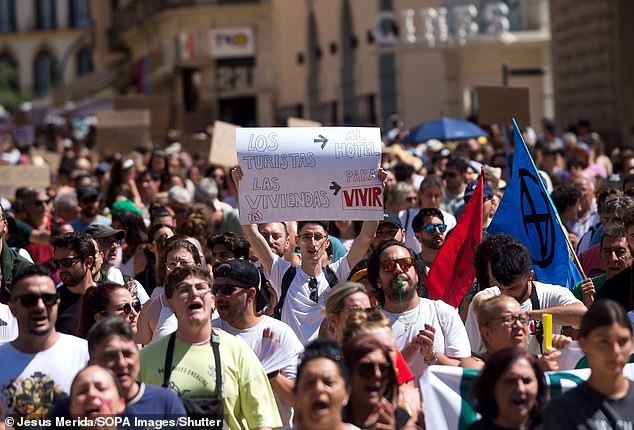
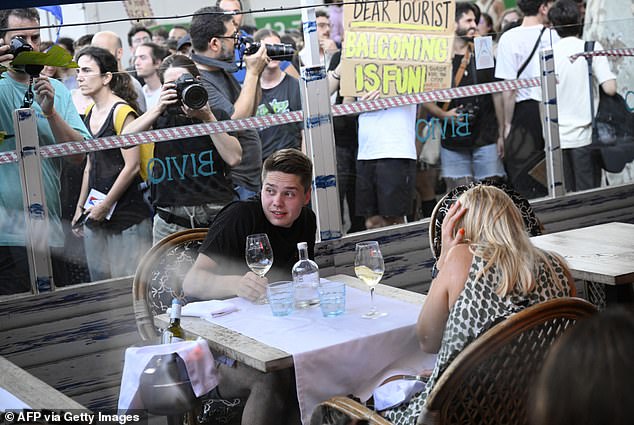
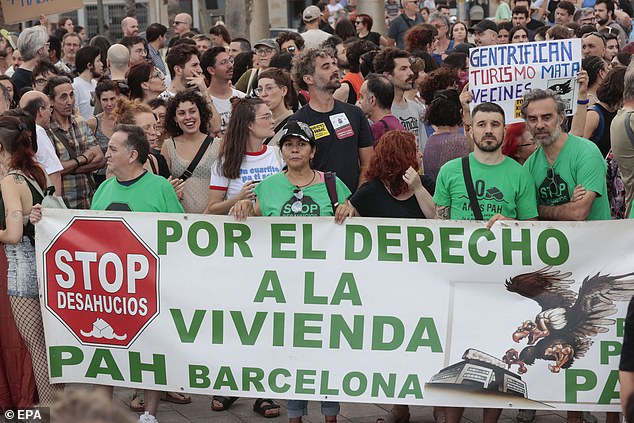
Two major demos took place in the Majorcan capital Palma, the first on May 25 when organisers had to apologise afterwards for abuse directed at some foreign holidaymakers.
Shocked tourists were booed and jeered by some locals as they ate evening meals on terraces in Palma’s Weyler Square.
Marchers were also heard chanting ‘Tourists go home’ as they passed through the central square on the 20-minute route from the park where the protest began to iconic street Paseo del Borne.
On July 27 around 250 protesters impeded tourist access to a picture-postcard Menorcan beach in a ‘surprise action’.
Activists boasted of filling a car park by Cala Turqueta, a beautiful cove on the island’s southern coast, with ‘residents’ cars’.
They then used towels and their own bodies to shape the message ‘SOS Menorca’ on the sand by the waterline.
And last year, when the Canary Islands were the focus of anti-mass tourism protests hotel bosses there admitted British holidaymakers were calling to ask if they would be safe.
Activists are continuing to demand the government make a change to prevent the number of tourists visiting the holiday hotspot amid soaring rents.
It comes as Spain is also set to impose a 100 per cent tax on non-EU citizens buying homes in the country as it moves to prioritise housing availability for locals.
